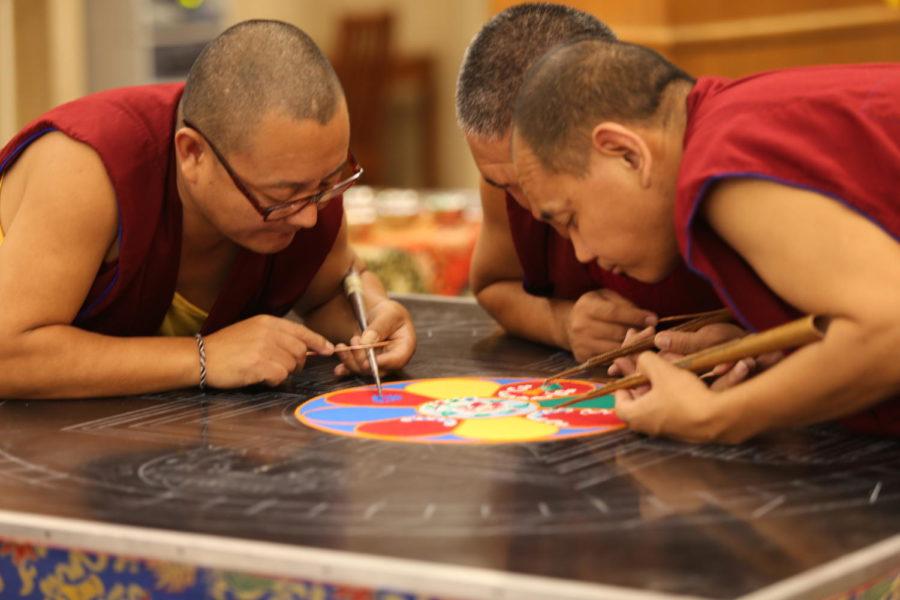Tibetan Monks: The symbolism of the sand mandala
September 24, 2018
Contrary to the majority of art forms and symbolic creations, the sand mandala embodies much more significance during its creation and destruction than in its preservation.
On Monday, Sept. 24, Sheling Rinpoche and Geshe Rinchen, two monks from the Drepung Loseling Monastery, led a presentation in the Sun Room of the Memorial Union to explain the significance of the sand mandala during their time at Iowa State.
To preserve their culture and Buddhism itself, Rinchen noted how important their work is in making the world a better place, especially when monks often live in exile.
“We have this opportunity to share our culture with all of you … because of the Dalai Lama and the United States government,” Rinchen said.
The mandala comes from the Tibetan culture and tradition. The mandala being made here is a manifestation of the Buddha of Compassion.
“Mandala literally means residence, or place of, the Buddha of Compassion,” Rinchen said. “There’s two kinds of mandalas. One is that of the creation of sand, and one is that you can imagine in your mind.”
Both kinds require a great amount of physical effort. Using their hands and straining their backs, both monks admitted how tired the process makes them concerning the physical form.
The various manifestations, or deities, of the Buddha all have their own mandalas (Buddha of Compassion, Buddha of Wisdom, and so on). These mandalas can vary in both size in shape.
“The substances used in the creation of the mandala can be gold, can be silver and different kinds of jewels,” Rinchen said.
Before the main process can begin, the monks must get permission from both the humans and the “invisible beings who also occupy the place,” such as water spirits.
In the mandala itself, there are four entrances, or gates, in each direction.
“You can see in the middle these lotus leaves. That represents the Buddha of Compassion,” Rinchen said.
The various deities will have a different symbol in the center. Each gate contains a different color. Green occupies the north, blue the east, white the west and yellow the south. The colors in the different directions represent the five different Buddha families in five different colors.
“When we achieve enlightenment, then our five angry gates transform into the five Buddha gates,” Rinchen said.
Gesturing toward a photo of a mandala of compassion, Rinchen noted how the jewels in the wall are offered to the Buddha of Compassion. On the outer edge of the mandala is a “lotus pattern ring.”
Rinchen explained how it functions like a fence. The rings stop negative things as protector for the mandala.
The sand mandala requires more than just physical work.
“Once you see it … then you have to meditate on it. Imagine it in your mind,” Rinchen said.
Corresponding with another meaning for the mandala, the creation and meditation can also help one to develop a positive state of mind.
Concluding the entire process, the dispersal of the sand represents both impermanence and dependence.
“The concept of the mandala [is that] everything is connected,” Rinchen said.

















